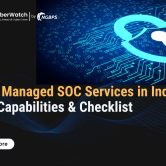In an era of rapidly evolving technology, where businesses and governments rely heavily on interconnected systems, securing sensitive data and critical infrastructure is more crucial than ever. Among the many cybersecurity solutions available, Privileged Access Management (PAM) stands out as a vital tool for protecting high-level administrative access to sensitive information and systems. In this blog, we will dive deep into understanding what PAM is, why it is essential for modern cybersecurity, and how leveraging privileged access management solutions can safeguard your organization against cyber threats.
What is Privileged Access Management (PAM)
Privileged Access Management (PAM) refers to the technologies, policies, and processes used to control and monitor access to sensitive systems, data, and resources by users with elevated privileges. These privileged users—such as system administrators, database managers, or network engineers—have the authority to perform critical functions, including installing software, configuring systems, and accessing sensitive data.
PAM ensures that these users can only access what is necessary for their roles, minimizing the risk of misuse or unauthorized access. By managing and securing privileged access, organizations can significantly reduce their attack surface and protect against both external and internal threats.

Why is PAM Important for Cybersecurity
Privileged accounts are often the prime target for cybercriminals. With access to sensitive systems and data, attackers can cause severe damage, steal confidential information, and disrupt critical operations. Additionally, insider threats—whether intentional or accidental—can be just as dangerous. PAM addresses these risks by enforcing strict controls over privileged access, ensuring that only authorized personnel can access and perform high-level functions.
Here are the key reasons why privileged access management solutions are essential to cybersecurity:
Protection Against External Threats
Cybercriminals actively seek out privileged accounts to exploit and escalate their attacks. By securing privileged access, PAM solutions help prevent unauthorized users from gaining control over critical systems, databases, and applications. They ensure that any attempt to use privileged accounts for malicious purposes is monitored and blocked.
Mitigating Insider Threats
Not all cybersecurity threats come from outside the organization. Privileged users within a company, whether employees, contractors, or third-party vendors, can misuse their access to compromise sensitive systems. PAM solutions ensure that privileged access is restricted, monitored, and properly logged, reducing the risk of insider attacks or unintentional misuse.
Enforcing the Principle of Least Privilege
The principle of least privilege is the practice of giving users the minimum levels of access they need to perform their duties. PAM solutions enforce this principle by granting privileged access on a need-to-know basis. This limits the scope of access, making it more difficult for attackers to find vulnerabilities and exploit them.
Regulatory Compliance
Many industries are governed by stringent regulations that require businesses to protect sensitive data and control access to it. PAM solutions provide detailed audit logs and reports, demonstrating compliance with regulations such as GDPR, HIPAA, and PCI DSS. By managing privileged access effectively, organizations can meet these requirements and avoid costly penalties.
Minimizing the Attack Surface
By controlling who can access critical systems and limiting how that access is used, PAM solutions help reduce the organization’s attack surface. This means fewer opportunities for cybercriminals to exploit vulnerabilities or gain unauthorized access to sensitive data.
Key Components of Privileged Access Management Solutions
Modern privileged access management solutions offer a variety of features to ensure that organizations can effectively manage and secure their privileged accounts. These features help prevent unauthorized access, monitor privileged activities, and enforce robust security controls. Some of the key components of PAM solutions include:
Privileged Credential Vaulting
Privileged credentials (such as administrative passwords) are stored in a secure, encrypted vault. This prevents unauthorized users from accessing these credentials and reduces the risk of them being stolen or misused. Access to these credentials is tightly controlled and logged.
Session Monitoring and Recording
PAM solutions monitor and record privileged user sessions in real time. This enables organizations to keep track of all activities performed by privileged users and detect any suspicious or unauthorized behavior. Recorded sessions can be reviewed for forensic analysis or used to meet regulatory compliance requirements.
Just-in-Time (JIT) Privileged Access
Rather than granting permanent privileged access, PAM solutions offer Just-in-Time access, where users are provided temporary, limited-time access to perform specific tasks. Once the task is complete, access is automatically revoked, reducing the risk of long-term privileged account misuse.
Multi-Factor Authentication (MFA) for Privileged Accounts
To strengthen the security of privileged accounts, PAM solutions often integrate with MFA technologies. Requiring multiple forms of authentication ensures that even if a password is compromised, unauthorized users will not be able to access privileged accounts without passing additional security checks.
Automated Privileged Access Controls and Approval Workflows
PAM solutions provide automated workflows that streamline the process of requesting, approving, and revoking privileged access. This ensures that privileged accounts are only granted access when absolutely necessary and that approval is required from appropriate personnel before access is granted.
Audit and Reporting Capabilities
Detailed audit logs of privileged activities are essential for maintaining compliance and investigating potential security incidents. PAM solutions provide comprehensive reporting tools that allow organizations to track who accessed what, when, and why. This helps with both internal governance and regulatory requirements.
How Privileged Access Management Solutions Enhance Cybersecurity
Implementing privileged access management solutions can have a profound impact on an organization’s overall security posture. Here’s how PAM enhances cybersecurity:
Reduced Risk of Credential Theft
By securing privileged credentials in encrypted vaults and enforcing strict access controls, PAM reduces the risk of credential theft, a common method used by attackers to gain unauthorized access.
Improved Accountability and Transparency
PAM solutions provide real-time monitoring and session recording of all privileged access. This creates a transparent and accountable environment, making it easier to track user activities, identify potential security incidents, and respond quickly.
Rapid Detection of Anomalous Behavior
By continuously monitoring privileged user activities, PAM solutions can quickly detect abnormal or suspicious behavior, such as unauthorized attempts to access critical systems or execute high-risk commands. This proactive monitoring allows organizations to respond before serious damage is done.
Enhanced Incident Response
In the event of a security breach, PAM solutions provide detailed logs and recordings of privileged user actions. This data is invaluable for investigating the incident, identifying the root cause, and implementing corrective measures to prevent future attacks.
Streamlined Compliance Efforts
PAM solutions offer detailed audit trails and reporting capabilities that make it easier for organizations to meet regulatory compliance standards. This ensures that privileged access is being properly managed and documented, which can help avoid legal penalties and maintain the trust of customers and stakeholders.
Conclusion
Privileged Access Management (PAM) is a critical component of modern cybersecurity strategies. As organizations continue to face increasingly sophisticated cyber threats, securing privileged accounts and enforcing strict access controls are no longer optional—they are essential. By implementing privileged access management solutions, businesses can protect themselves from both external attacks and insider threats, while also ensuring compliance with industry regulations.
Organizations that invest in PAM will be better equipped to safeguard their most sensitive systems and data, reduce their attack surface, and respond more effectively to security incidents. Ultimately, PAM is a key enabler of cybersecurity resilience in today’s threat landscape.




